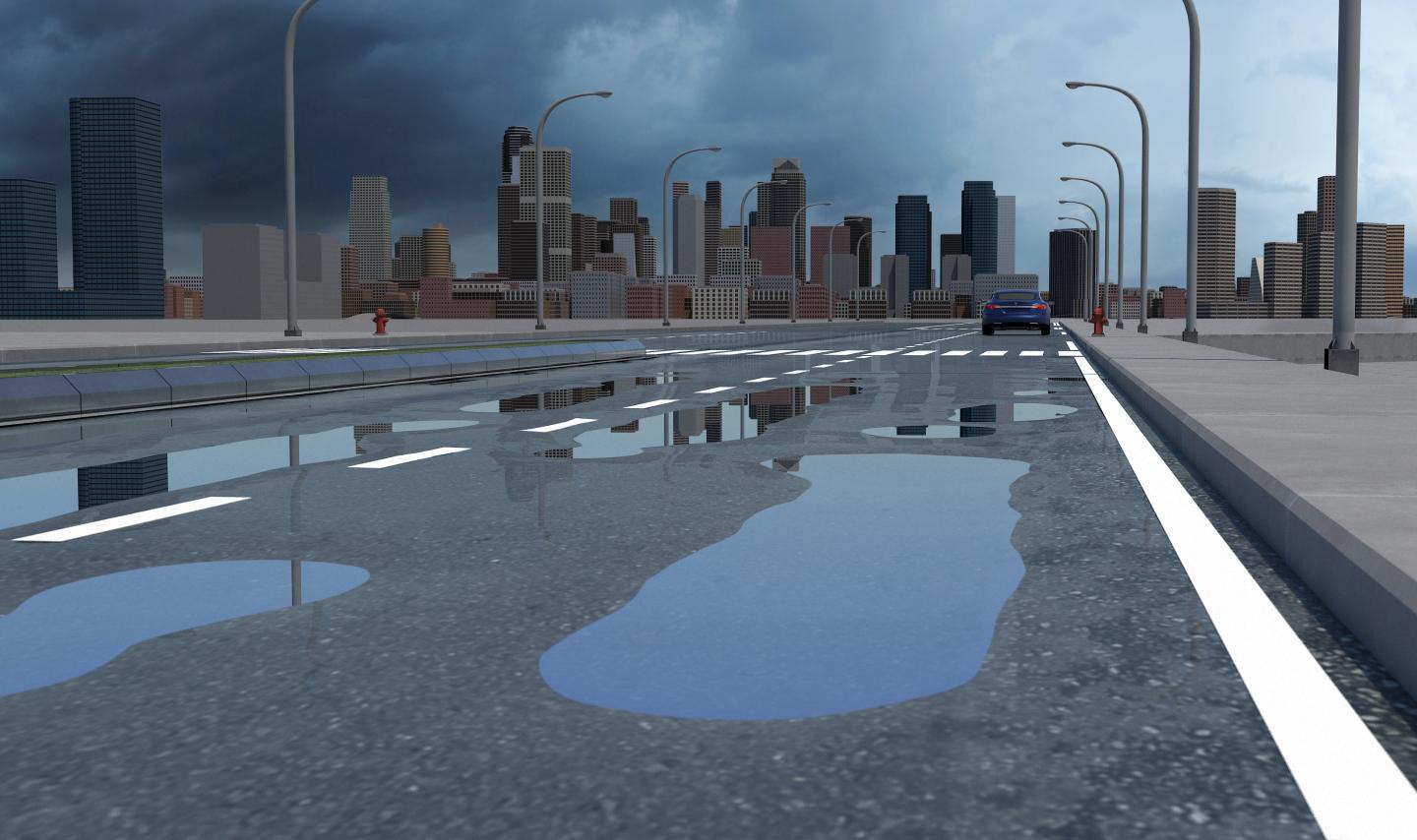
Credit: Andy Sproles/ORNL, U.S. Dept. of Energy
Modeling – Urban climate impacts
Researchers at Oak Ridge National Laboratory have identified a statistical relationship between the growth of cities and the spread of paved surfaces like roads and sidewalks. These impervious surfaces impede the flow of water into the ground, affecting the water cycle and, by extension, the climate.
“We’ve shown that there is a specific mathematical shape to the relationship between a city’s population and the total paved area,” ORNL’s Christa Brelsford said. “Using that, we examined climate model predictions and determined they correctly represent some important attributes we know about cities.”
Using expertise in urban scaling theory, hydrology and Earth system modeling, the scientists demonstrated this statistical rule can be used to evaluate climate model predictions, reducing uncertainty by constraining processes that capture human decision-making and its impacts.
Their published method can help improve the reliability of predictions of future environmental change.
Media contact: Kim Askey, 865.576.2841, [email protected]
Image: https:/
Caption: The built environment, from roads to sidewalks to parking lots, affects the water cycle and climate. Scientists at ORNL have explored the use of statistical relationships for evaluating representations of cities and the land surface in climate models. Credit: Andy Sproles/ORNL, U.S. Dept. of Energy
Scientists at Oak Ridge National Laboratory successfully demonstrated a technique to heal dendrites that formed in a solid electrolyte, resolving an issue that can hamper the performance of high energy-density, solid-state batteries.
Lithium metal anodes in batteries tend to form dendrites, which are tree-like metallic microstructures that can appear during charging, causing capacity loss and, in some cases, a short circuit.
In the experiment, ORNL scientists removed dendrites in a ceramic, garnet-based solid electrolyte using a non-destructive electrochemical pulse method. The lithium metal preferentially oxidized from the dendrites at very low current density and completely disappeared.
“Our research shows that using this method has the potential to rejuvenate the battery’s performance and enhance its safety while it’s being used, without opening the battery cell,” said ORNL’s Ilias Belharouak.
Next, the team will test more electrolyte materials and create a scaled-up prototype battery using the new method.
Media contact: Stephanie Seay, ORNL, 865.576.9894, [email protected]
Image: https:/
Caption: ORNL researchers used an electrochemical process to heal dendrites that formed in a ceramic, garnet-based catalyst designed for a solid-state lithium battery. Credit: Andy Sproles/ORNL, U.S. Dept. of Energy
Manufacturing – Multimaterials’ dual approach
Oak Ridge National Laboratory researchers combined additive manufacturing with conventional compression molding to produce high-performance thermoplastic composites reinforced with short carbon fibers. Their approach demonstrates the potential use of large-scale multimaterial preforms to create molded composites.
In a study, researchers used ABS polymer, filled with carbon and glass fibers, in three manufacturing processes: additive, extrusion compression molding and the combined approach of additive and compression molding. The team analyzed mechanical properties of the resulting composite samples.
“We found that this integrated process showed substantial improvement in mechanical properties due to high fiber alignment and reduced porosity,” ORNL’s Vipin Kumar said. “Our demonstration proved that multimaterials can be deployed for the production of the plastic preforms industry needs to make the composites for aviation, transportation, defense and aerospace applications.”
Further research will include developing the system to be able to use long or continuous carbon fibers for enhanced strength.
Media contact: Jennifer Burke, 865.414.6835, [email protected]
Image: https:/
Caption: ORNL researchers combined additive manufacturing with conventional compression molding to produce high-performance thermoplastic composites, demonstrating the potential for the use of large-scale multimaterial preforms to create molded composites. Credit: ORNL/U.S. Dept. of Energy
###
Media Contact
Karen Dunlap
[email protected]
Related Journal Article
http://dx.





